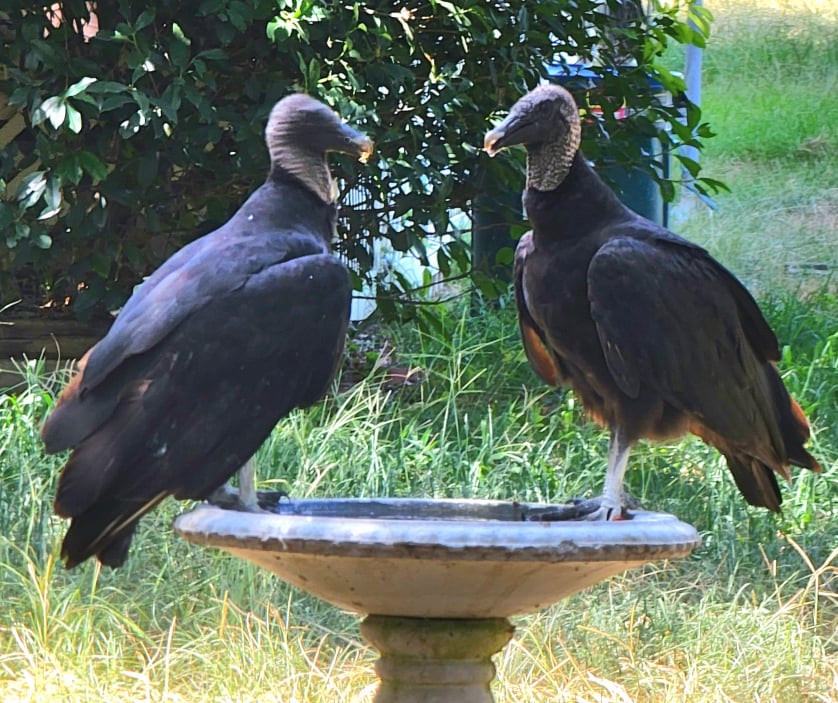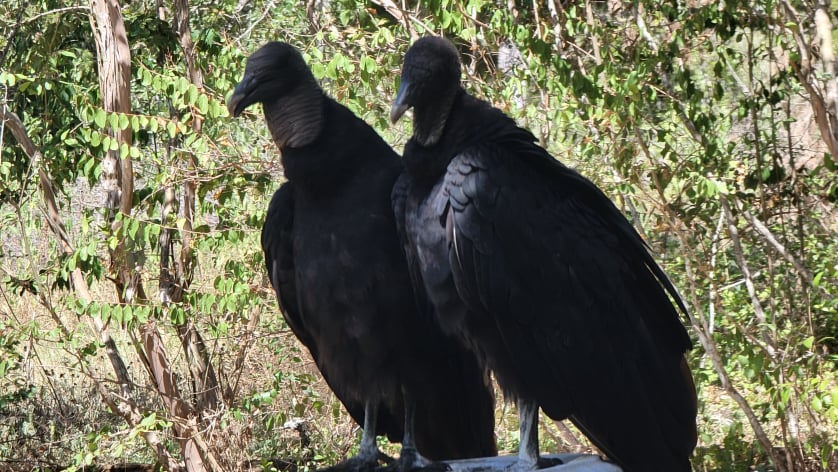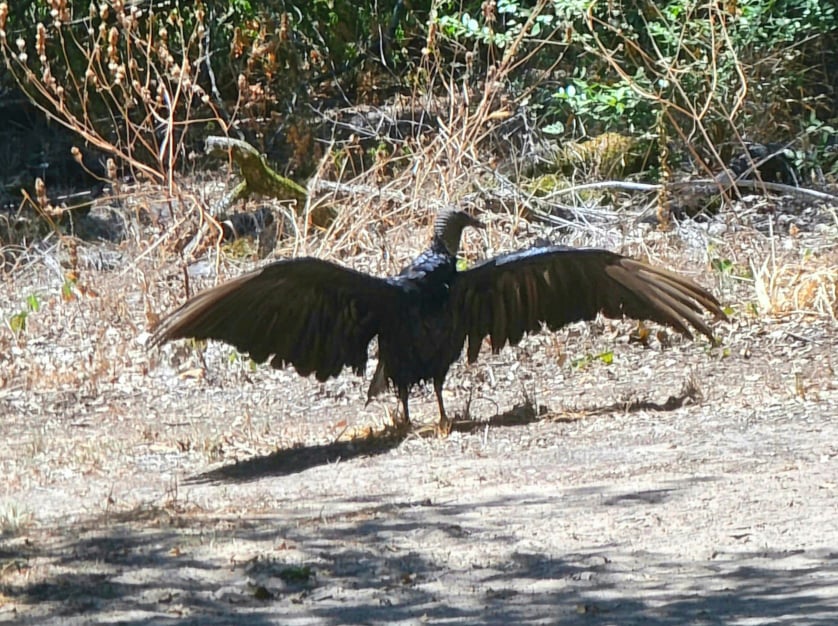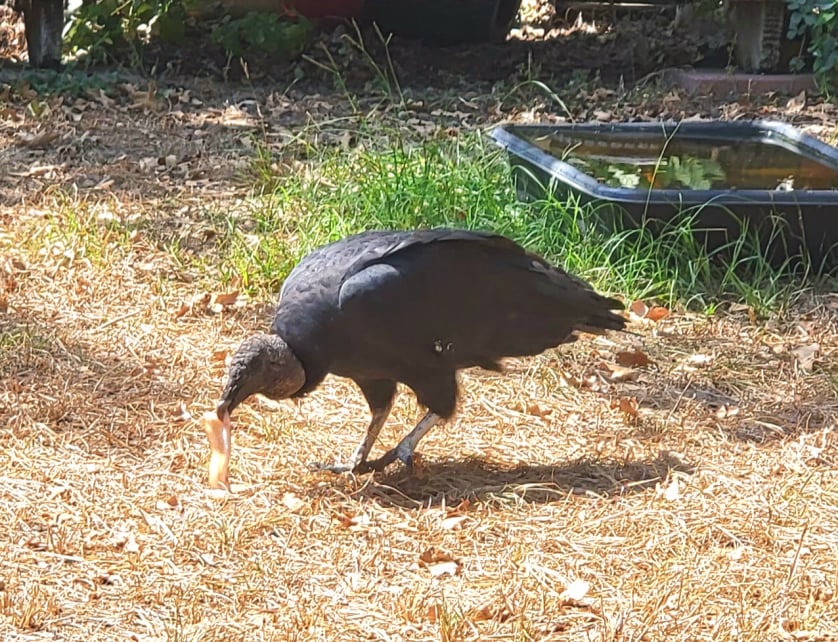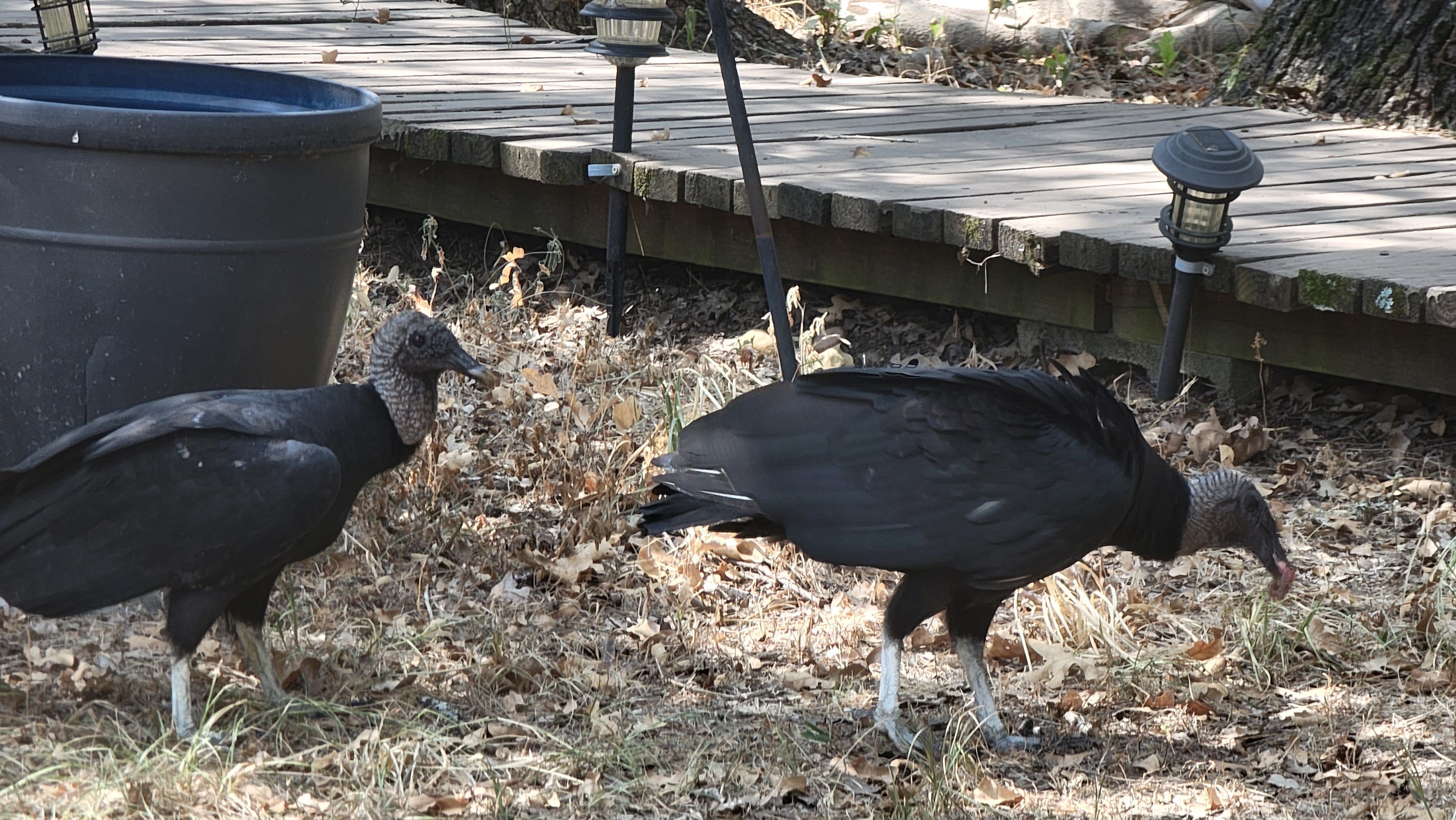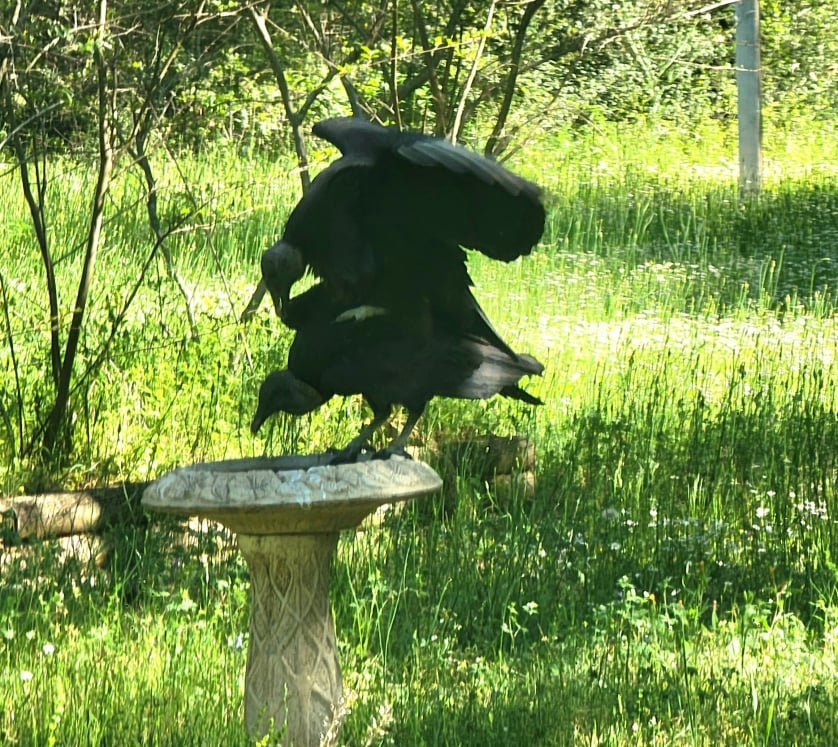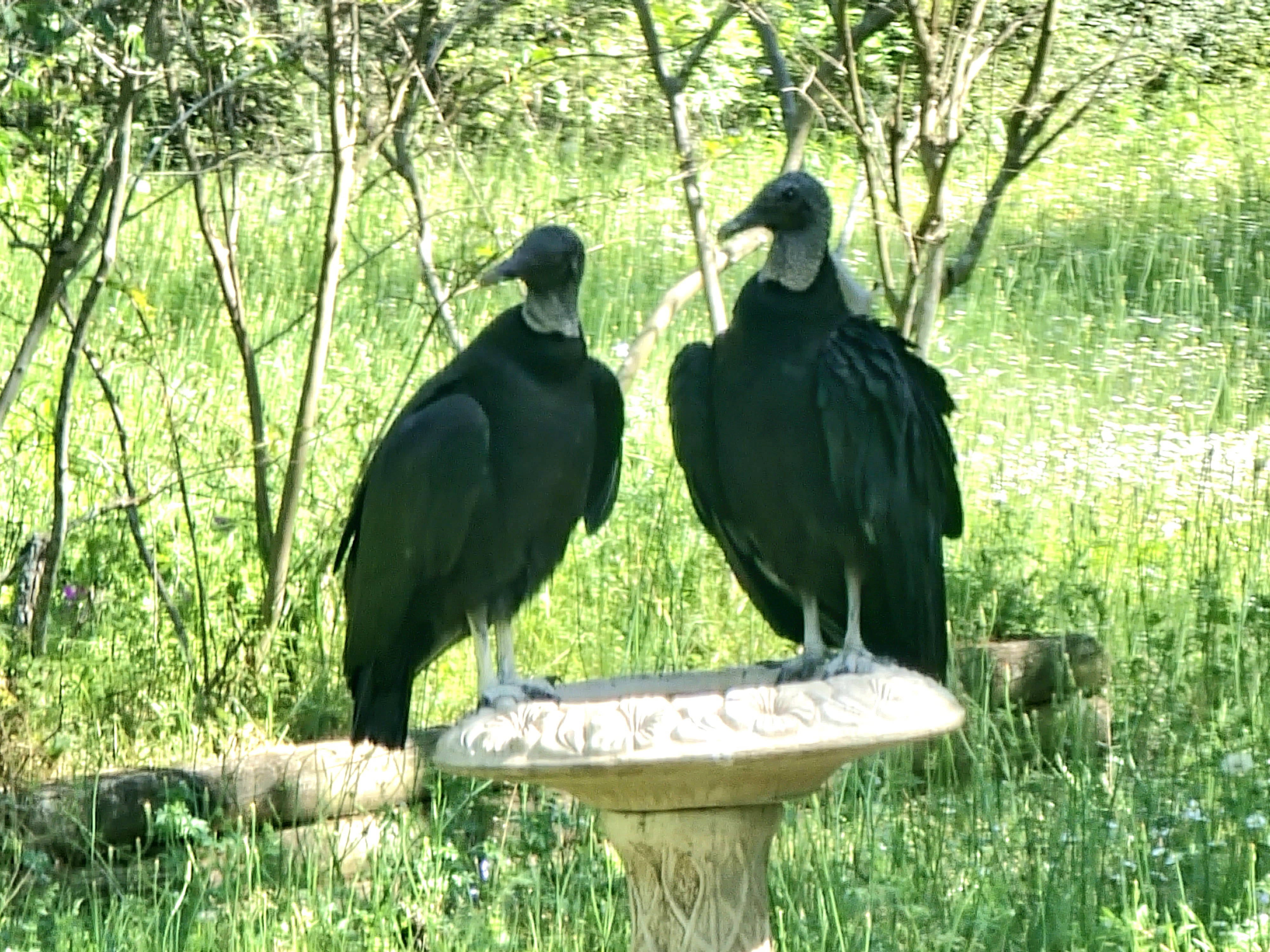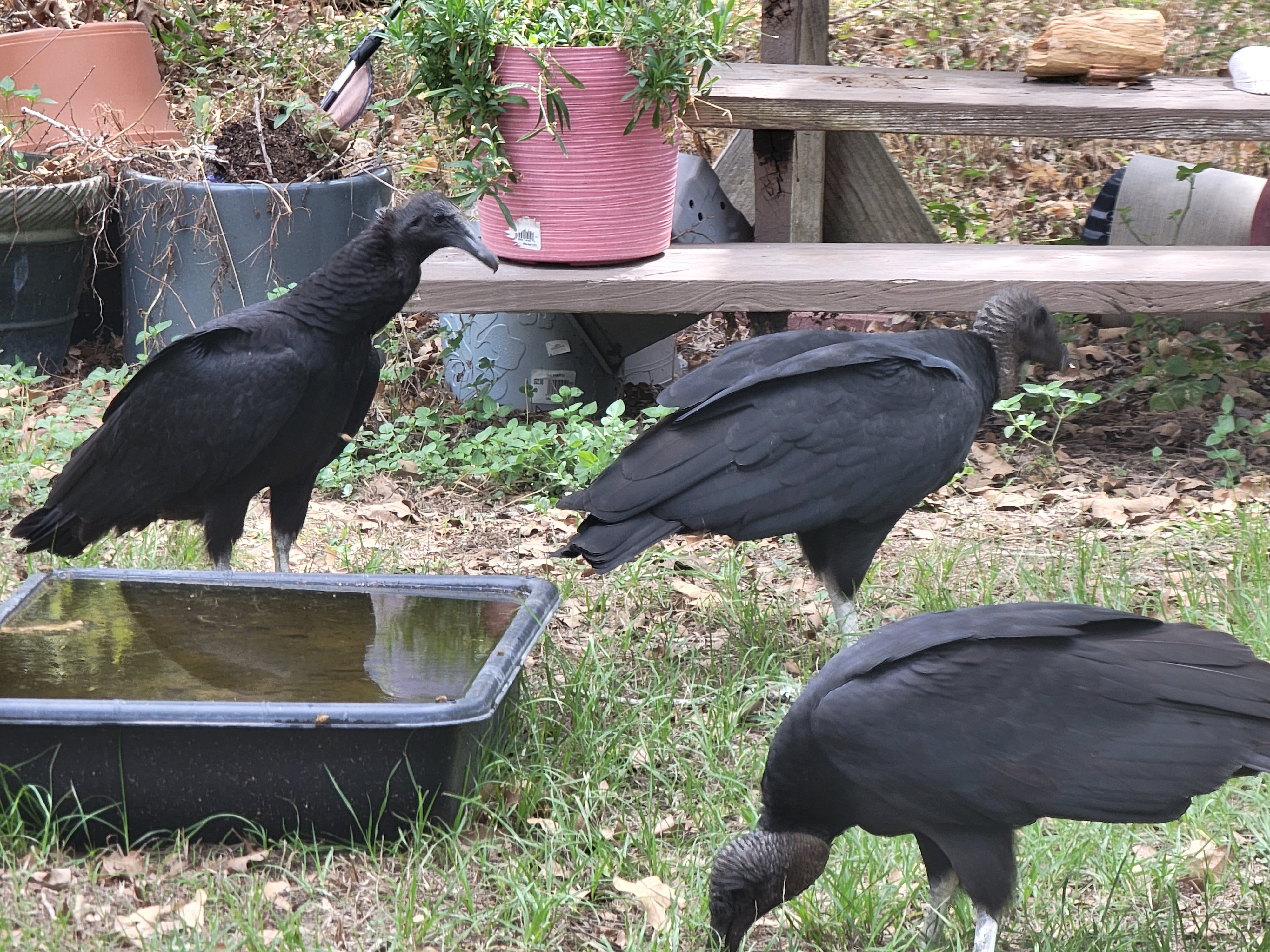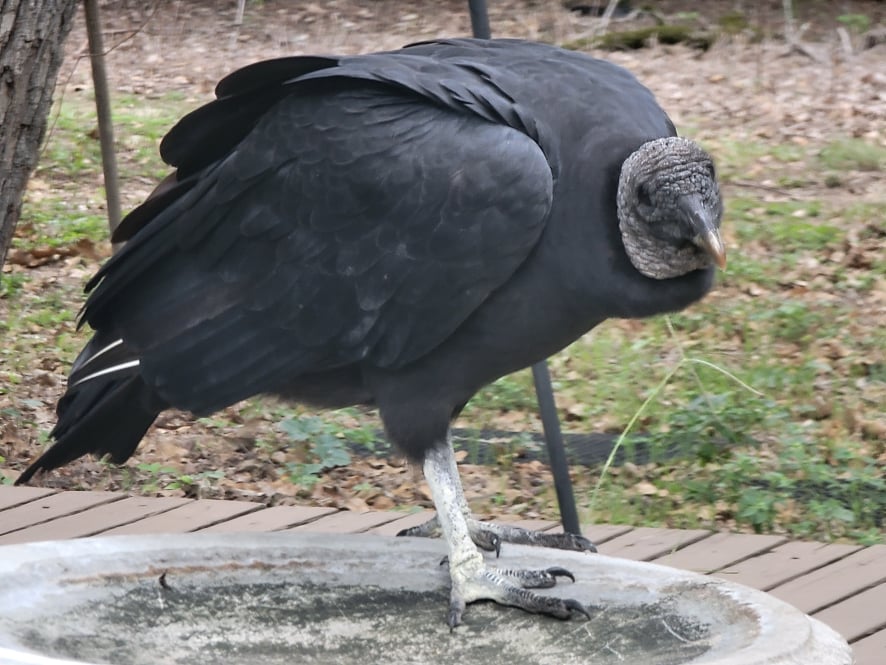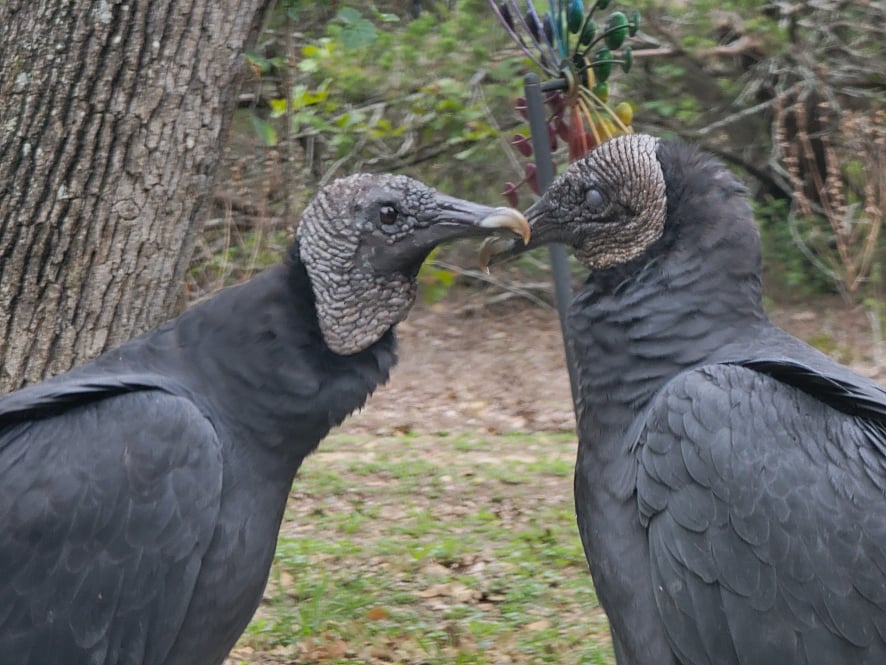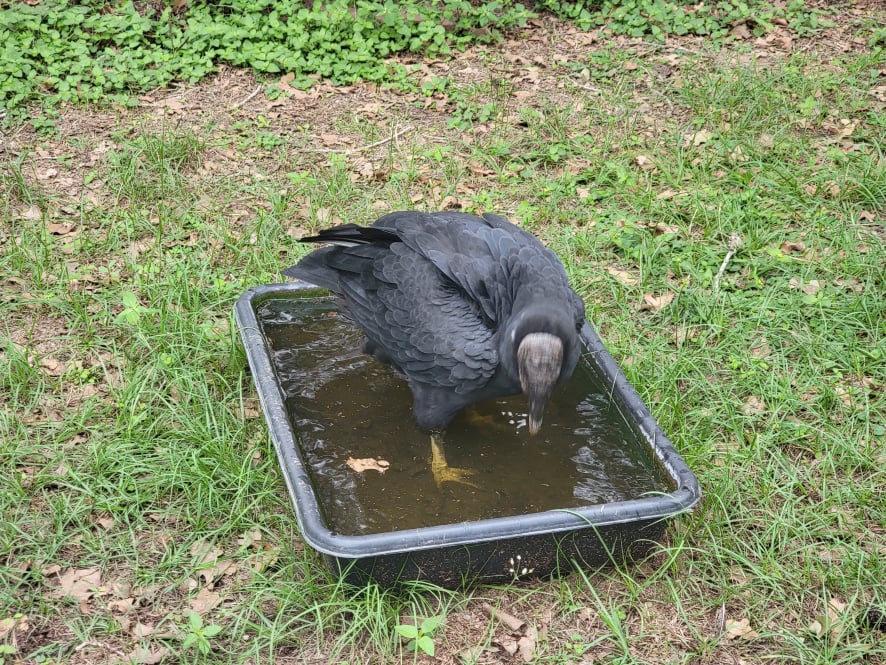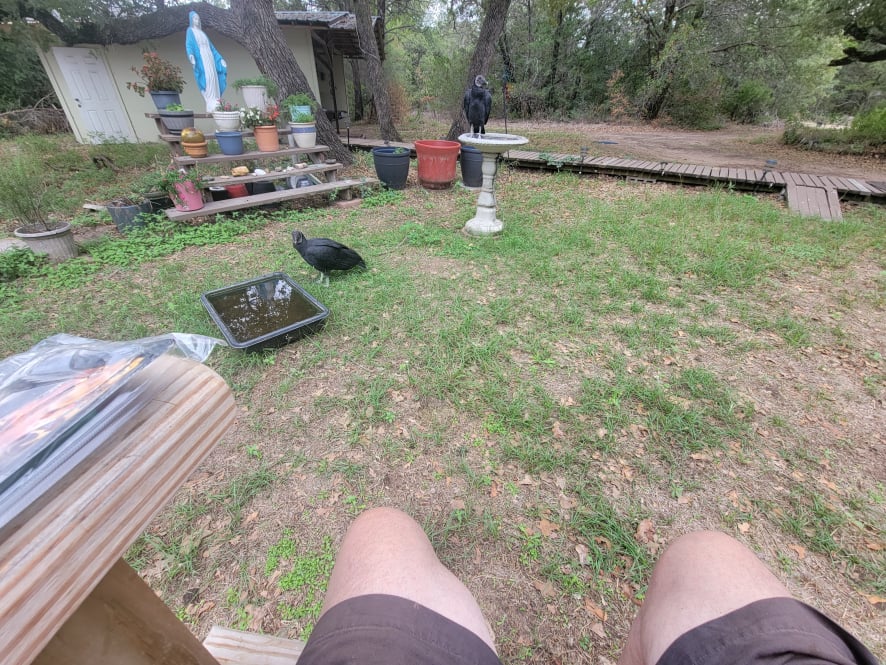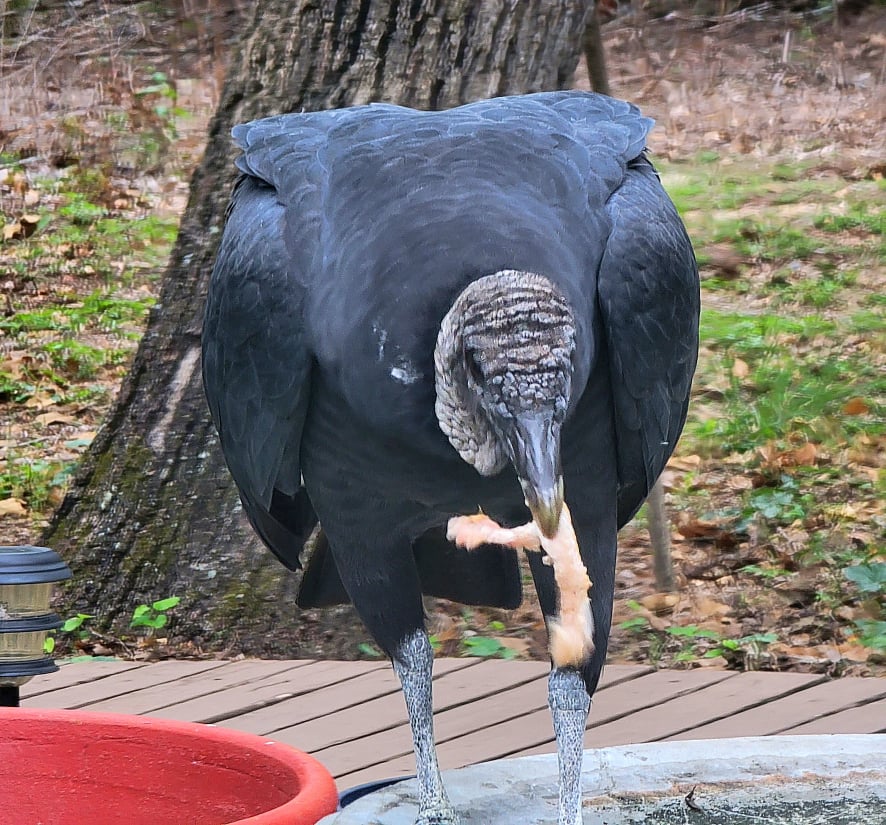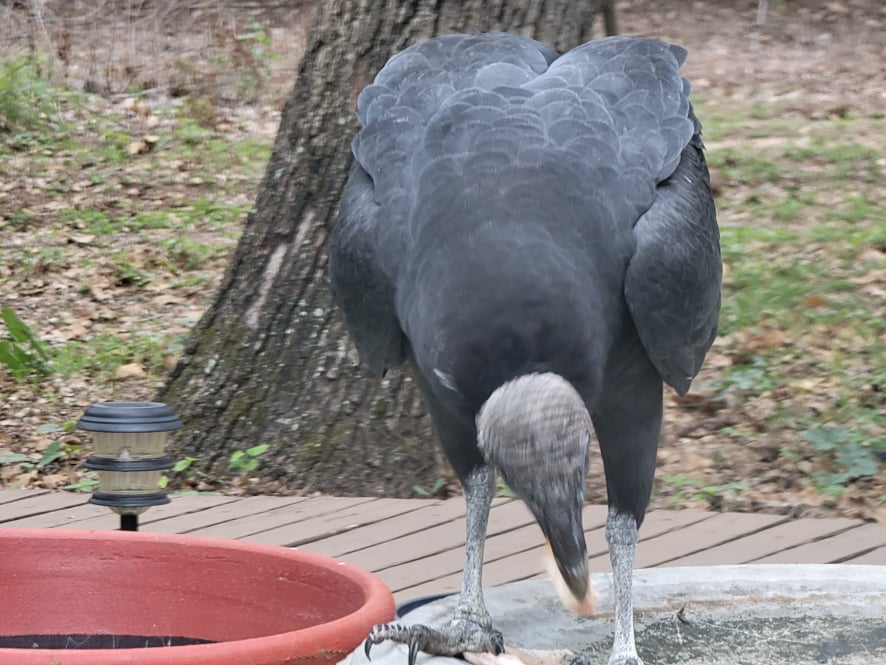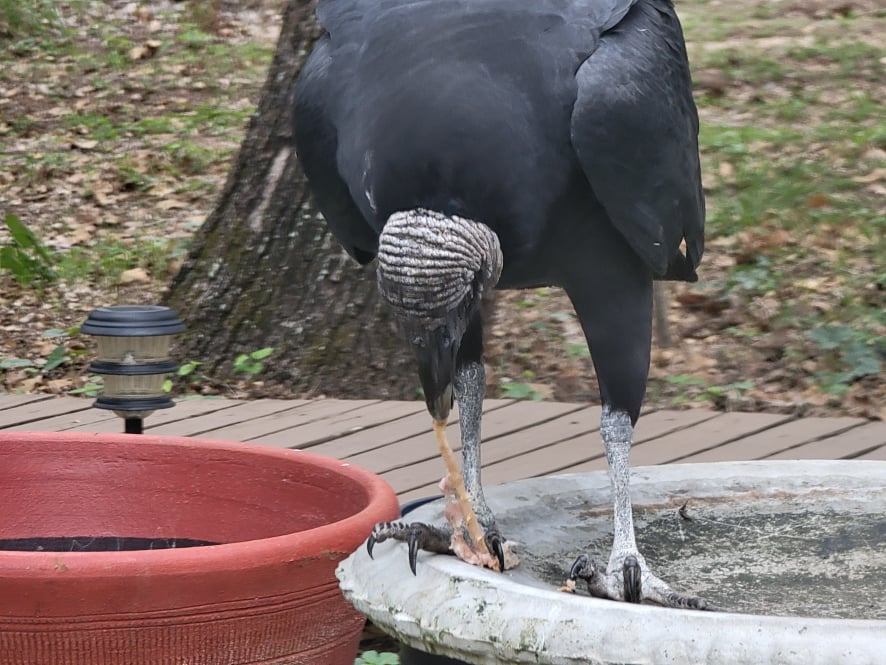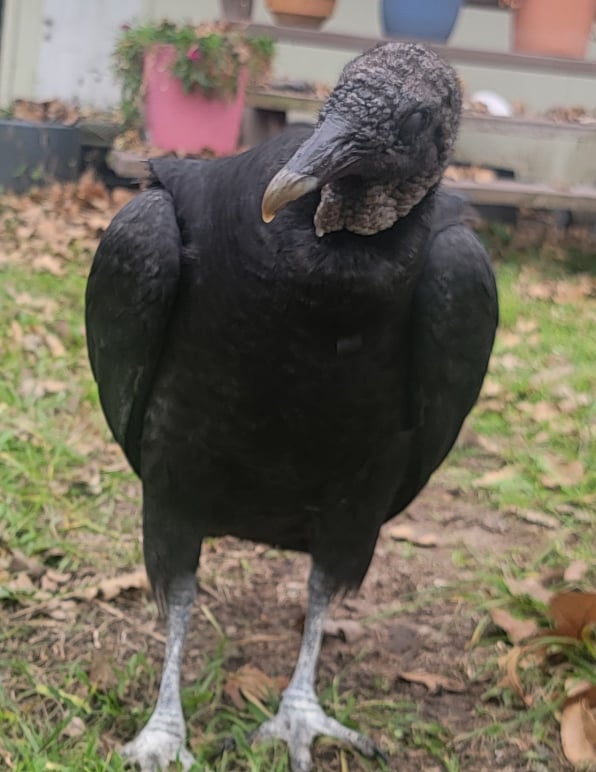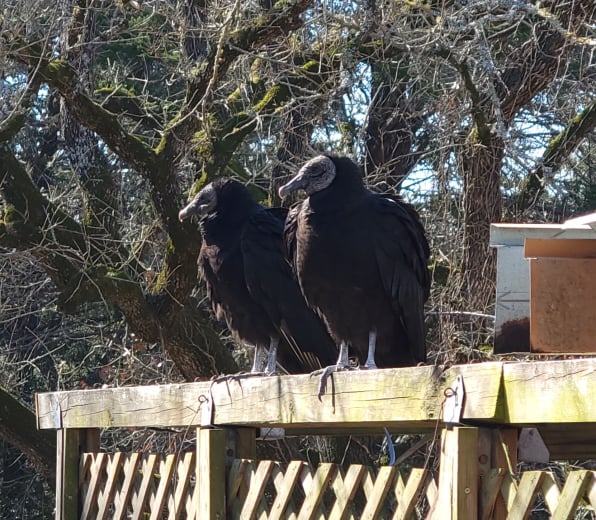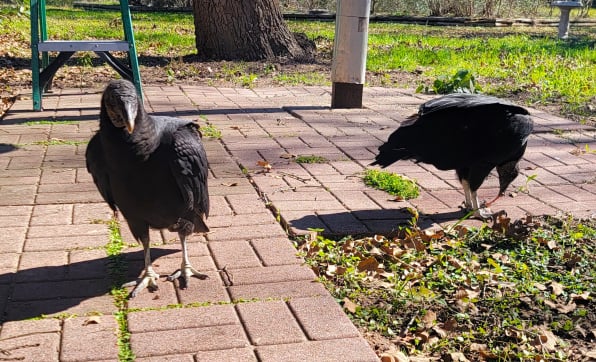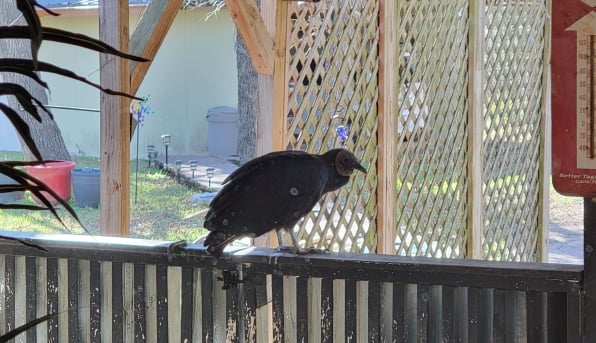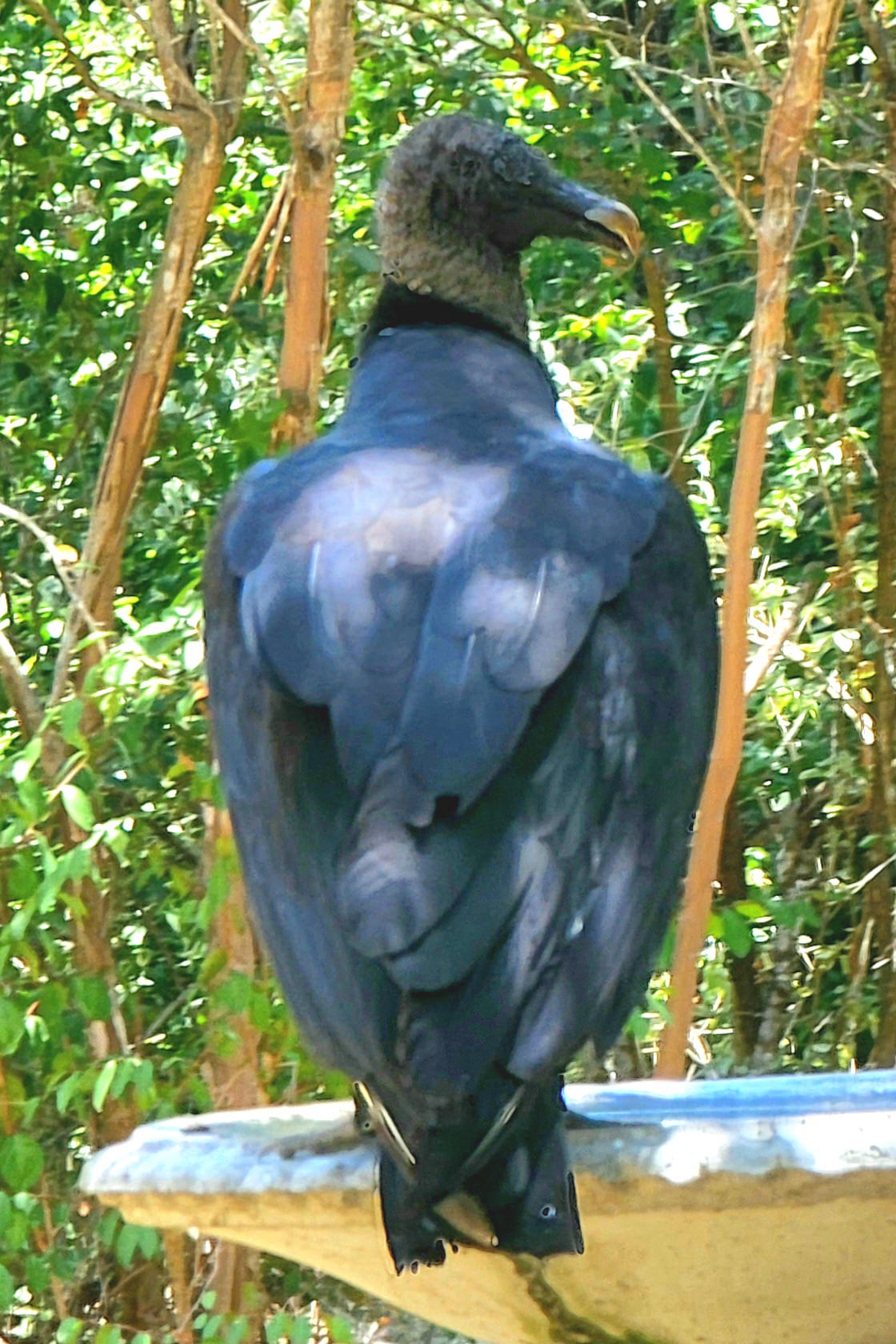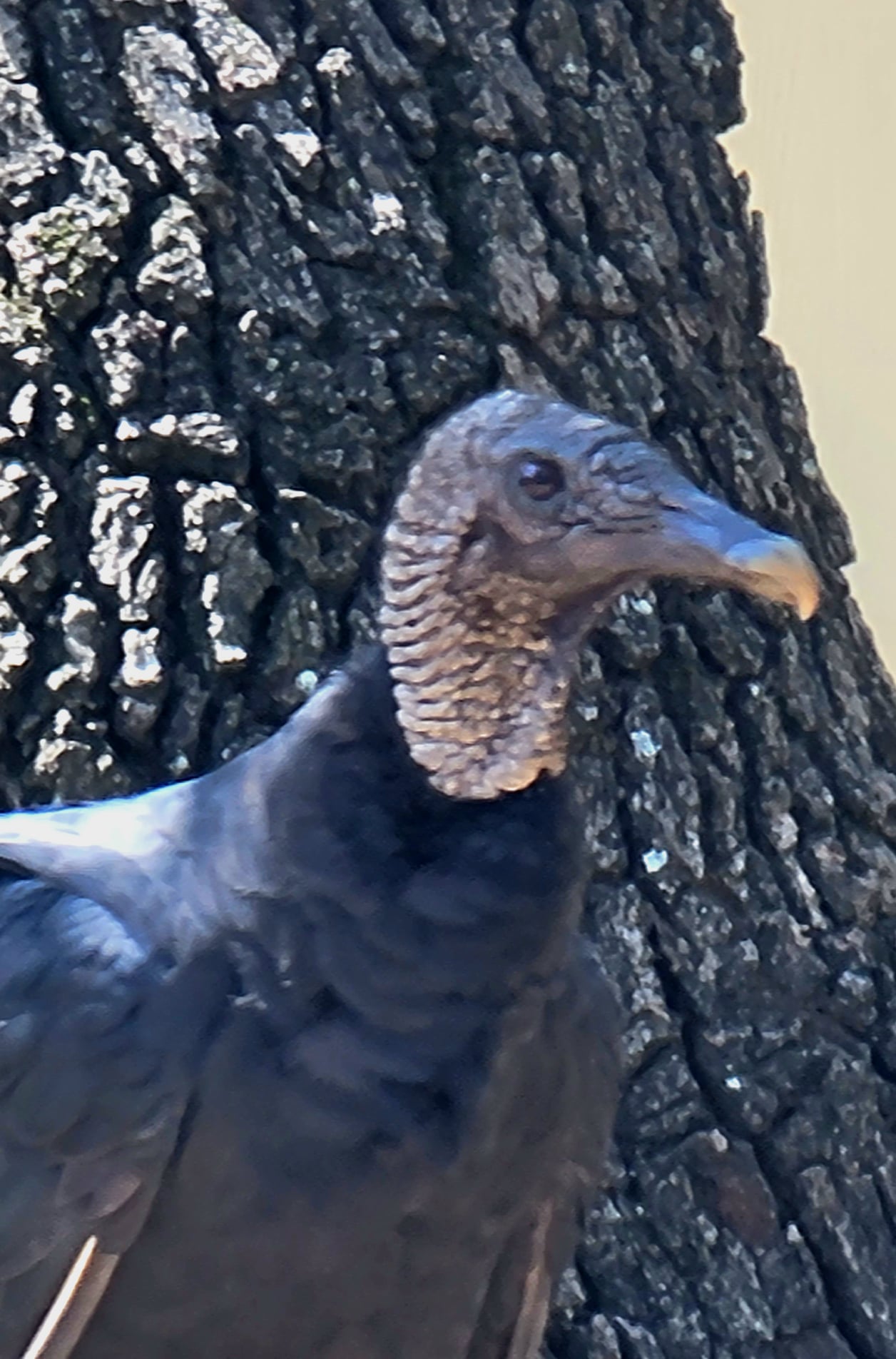Texas Black Vulture
Black Vultures are residents of Texas all year. They are recorded in 18% of summer checklists and 21% of winter checklists.
The body of the Black Vulture is black. They’re considered the blackest of all the vultures. Their backs, wings, breasts, bellies, and tails are black, although they have silvery patches on the underside of their wings that make it look like they have fingers when in flight. Their eyes are brown, and they have grayish-white legs.
The Black Vulture has a gray, featherless head and neck that look like wrinkled skin.
Black Vultures are “bald” out of necessity because it needs to stick its head into the bodies of dead animals to get to their juiciest parts. Having feathers on their heads will make it hard for them to clean themselves up when bits and pieces of the carrion stick to the feathers.
The Black Vulture is also commonly called American Black Vulture but is not its official name. It’s only meant to distinguish it from the Eurasian Black Vulture, Aegypius monachus.
Coragyps atratus
Length: 23 – 27 in (58 – 69 cm)
Weight: 76.8 oz (2177 g) Almost 5 lbs
Wingspan: 54 – 60 in (137 – 152 cm)
You can find Black Vultures in open areas of lowland and middle elevations. They are often seen in forested landscapes and roost in wooded areas that are close to water. Other habitats include shrublands, grasslands, swamps, and pastures, and they are even sighted in human-occupied towns foraging in trash cans and garbage dumps. And on our birdbath in Cedar Creek, Texas.
Black Vultures eat practically anything, but mainly they eat carrion or decaying animals. They may be able to see dead animals on the ground themselves, but they usually rely on other scavenger birds to direct them towards food.
They eat small to large-sized dead poultry, raccoons, coyotes, snakes, and even floating fish. They also kill small or vulnerable animals like newborn calves, lambs, and tortoises and spend time at the dumpsters and landfills rummaging among the trash.
Nests of Black Vultures technically are non-existent since they don’t build them. They just lay their eggs on the ground in places like caves, abandoned buildings, and thickets. They may also put them inside hollow trees and tree stumps and re-use successful nesting sites for many years.
Female Black Vultures lay one to three eggs that both parents incubate for twenty-eight to forty-one days. Once they hatch, they are fed by their parents through regurgitation, meaning parents spit up food from their own stomachs and into the mouths of their babes. They nurture their young for as long as eight months.
Black vultures form strong social bonds such that they have communal roosts and they share food among relatives. They’re extremely selective about non-relatives joining in the communal roosts and will attack those who will try.
Two of the three species of Vultures found in North America have been spotted in Texas. They are the Black Vulture and Turkey Vulture.
Vultures have some disgusting habits such as urinating on themselves to keep cool, only eating bacteria-laden dead animals which they stick their bald heads into to tear the flesh, and vomiting to escape from predators.
However, these disgusting habits are in fact brilliant adaptations that help the vultures to survive and clean up the environment for us.
Vultures urinating on themselves not only help to keep them cool but is also thought to kill the bacteria on their legs that they pick up when walking through the dead animals.
Vultures’ bald heads stop their feathers from getting congealed with blood from having to stick their heads inside carcasses to get to the flesh. Their legs are weak, and their talons are not strong enough to grab and hold the food, so they just use their powerful beaks to tear and rip.
The stomach acid of vultures is extremely strong, and this makes them one of the few animals that can safely eat the bacteria-laden carcasses that would potentially harm or kill other species, so getting rid of this harmful bacteria from the environment. Bacteria such as botulism and anthrax.
Vomiting to get away from predators is thought to enable them to be lighter to take off, as they gorge themselves so become very heavy, and it may provide a distraction.
Vultures lack vocal organs to make songs, but they can make deep hisses or grunts, especially when alarmed or jostling for a space at a carcass.
There are 23 species of vultures in the world, and 2 of them live in Texas. If you enjoy finding out about birds of prey in Texas then you should check out all the eagles and hawks you can spot here.
This guide will help you identify the types of Vultures spotted in Texas according to avibase and uses data collected from bird watchers on ebird to give real information about when these birds can be spotted.
